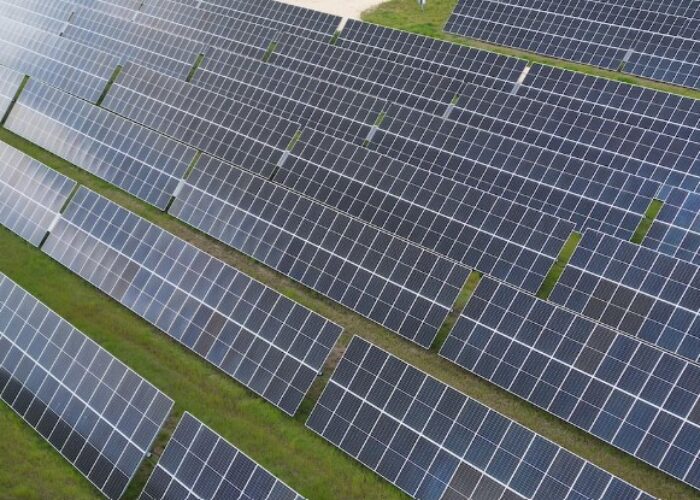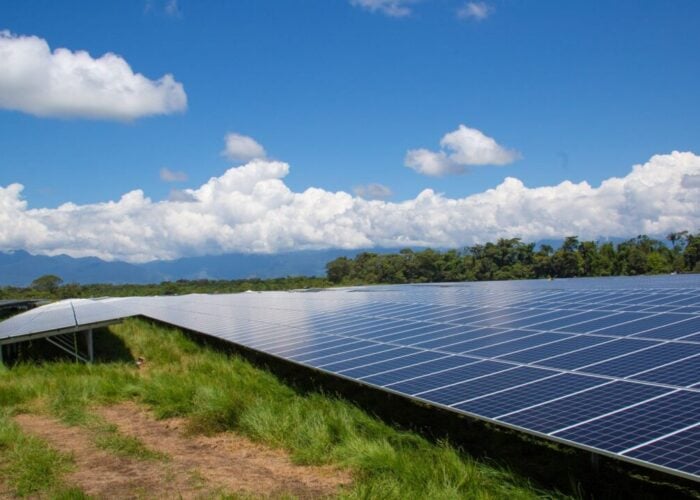
India has added 11GW of solar PV capacity during the third quarter of 2025, according to a report from the Institute for Energy Economics and Financial Analysis (IEEFA).
This is the second quarter in a row where India saw more than 10GW of new solar PV added, trebling the average quarterly numbers from 2022 that were about 3.5GW.
Try Premium for just $1
- Full premium access for the first month at only $1
- Converts to an annual rate after 30 days unless cancelled
- Cancel anytime during the trial period
Premium Benefits
- Expert industry analysis and interviews
- Digital access to PV Tech Power journal
- Exclusive event discounts
Or get the full Premium subscription right away
Or continue reading this article for free
Solar PV accounted for 69% of the 16GW of new power generation capacity added in India during Q3 2025, bringing solar’s total installed capacity in the first nine months of 2025 to 29.5 GW. This represents a 68.9% increase from the same period a year ago, when India registered 17.4GW of solar PV additions. As of the end of September 2025, India had over 127GW of installed solar PV capacity, the most of any renewable energy resource, and only behind coal power, with 224GW.
Rooftop solar has also witnessed renewed interest in 2025, according to IEEFA, with 5.8GW of capacity additions between January and September 2025. This represents an 81% increase from the same period last year. IEEFA numbers are slightly higher than those from market research firm Mercom India, which estimates that 4.9GW of rooftop solar capacity was added in the first nine months of 2025. Nearly half of this year’s rooftop PV additions came from Q3 2025 with 2.1GW added in the quarter, according to Mercom India.
Moreover, the removal of the 100% waiver of inter-state transmission system (ISTS) charges from 1 July 2025 for standalone solar PV and wind projects has accelerated the commissioning of renewable energy projects, according to IEEFA. The charges are set to be reintroduced by July 2028. On top of this, the favourable economics of renewable energy plants, with or without co-located storage, and a positive policy scenario have driven the growth of renewables in India, added IEEFA.
With three more months to go before final numbers for PV additions in 2025 are available, India has already surpassed the totals from all of 2024.
Indeed, India added more than 24.5GW of solar capacity in 2024, according to data from energy consultancy JMK Research. Last year was already a record year for the country, which saw continued growth in PV installations, matched at the upstream level by more than 100GW of domestic annual nameplate capacity for modules.
Furthermore, investments in the renewable energy industry continue to increase in India. During Q3 2025, US$5.2 billion was invested in renewable energy, a 112.6% year-on-year increase. This brings the total investments until the end of September to US$18 billion, numbers that are far above the totals registered in 2022 (US$US$15.2 billion), 2023 (US$13.2 billion) and 2024 (US$10 billion).
“Global private equity and sovereign funds are showing heightened interest in India’s renewable energy sector, spurred by supportive energy transition policies and sustained economic growth. While solar power remains the primary driver of India’s energy transition, emerging hybrid applications and the integration of energy storage to deliver firm power are further accelerating investment momentum,” said IEEFA.
However, the accelerated growth of solar PV additions in India has also been met with an increase in solar curtailment, said IEEFA. Reports from the Grid Controller of India showed that curtailments of solar PV rose by 12% between May 2025 and October 2025.
Due to the accelerated growth of solar PV and wind installations, the grid has struggled to keep pace. The grid challenge, along with recent tender issues, was one of the main focus points of a recent PV Talk (subscription required) with Abhinav Jindal, deputy general manager at Power Management Institute (PMI).






